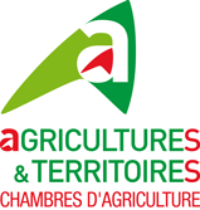Document type : Article published in 20 minutes
Author: Fabrice Pouliquen
Extract: 'Intensive', 'industrial', 'factory farms'. The French presidential candidates have their own words for it, but several of them are advocating a move away from those forms of livestock farming that are considered to be most harmful to animal welfare, the environment and health. But what exactly are they talking about and how can it be achieved?
Never before has a move away from intensive livestock farming achieved such traction in the run-up to a presidential election in France. A number of the candidates have proposed it, from Yannick Jadot, who has included it as one of his earliest actions, to Jean-Luc Mélenchon, who is advocating an end to such systems from 2027.
The idea that underlies these moves is to "do less but better". Hélène Thouy, the Animalist Party candidate who failed to gain the required 500 letters of support, had been aiming to halve animal protein-production by 2027.
Not only do farmers who already operate established intensive models need to be persuaded to abandon them, the French public also needs to reconsider its eating habits. [...].
Factory farms... but not only?
Hélène Thouy specifies both: "industrial" and "intensive". In both cases, there is no official definition. For "industrial breeding", the criterion taken into account is the number of animals, most often based on the thresholds used to determine the Installations Classified for Environmental Protection (IPCE). These are industrial or agricultural operations likely to create risks or cause pollution or nuisances. "They are divided into three regimes according to their dangerousness: 'declaration', 'registration' and 'authorization'," explains Suzanne Dalle, head of the Greenpeace agriculture campaign. In June 2020, the NGO used the third category to determine the number of "factory farms" in France. "This corresponds to farms that exceed the thresholds of 750 locations for sows, 2,000 for production pigs (over 30 kg), more than 40,000 locations for poultry, more than 400 for dairy cows, Suzanne Dalle continues. These numbers are well above the average in France.
Greenpeace counted 3,300 factory farms in France, half of them in Brittany. They represent only a small percentage of the total number of farms in their respective sectors (20% of poultry, broiler and egg-laying farms). On the other hand, they concentrate a significant proportion of the total number of animals raised (more than 38% of broilers and more than 70% of laying hens).
However, it is possible to be a small farm and still be in an intensive production mode. To define the latter, Agathe Gignoux, public affairs officer at CIWF France, an NGO that promotes sustainable livestock farming, adds other criteria to that of density. It is the absence of access to the outside for the animals," she says. But also the use of genetics oriented towards productivity, with strains of animals chosen to reach their slaughter weight as quickly as possible, even if this ultra-rapid growth generates fractures and high mortality. Of the one billion animals raised each year in France for our consumption of meat, eggs and milk, "80% are raised in an intensive model," she says. Without taking into account, therefore, their basic needs [...].
What scope is there to "do less but better"?
Must we change everything all over again? "We will need support," warns Claude. For Hélène Thouy, the main obstacle is the debts incurred by farmers. "The State must buy out the debts of farmers who decide to abandon intensive farming and, in addition, provide financial help for those who convert to the production of plant crops," she believes. The Animalist Party candidate calculated that the total budget required would be around 10 billion euros. [...] This approach annoys Etienne Gangneron. The vice-president of the FNSEA, the leading agricultural union, is convinced that farming practices are constantly improving. "Regardless of size, this criterion makes no sense", he believes. "Animals can live in very poor conditions on small farms and the opposite can be the case on larger ones. It is also the latter that have to follow the strictest environmental standards". On the topic of reducing meat production in France, Etienne Gangneron is concerned about the increased costs involved, "especially for poultry and pig meat, which are the cheapest and most widely consumed". "Will consumers change their habits?", asks Claude, who does not "want to live on state hand-outs but on his work". Etienne Gangneron also has doubts: "The NGOs can say what they like, but what we see is that the majority of French people buy as cheaply as they can. We must also supply this need."
Do we also need to tackle our consumption patterns?
Thosewho favour the abandonment of intensive livestock farming are well aware of this issue and view the transformation of eating habits - French meat consumption has almost doubled since the post-war period - as a major lever in the transition they advocate. In her manifesto, Hélène Thouy stated that she wanted to reduce both meat production and consumption in France by 50% within five years.
"We can do this if we stop hiding the cost of the wider negative impacts of meat production (on health, the environment, etc.), if we can finally get away from the mantra that we have to eat meat at every meal, and if we re-learn the art of cooking with plants," says the co-president of the Animalist Party.






